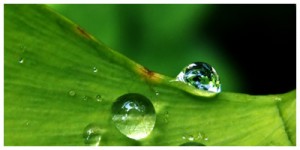(c) Sakari Viika
(Play) – the choreography of the Finn Kenneth Kvarnström does just that: play. It is a play between the dancers, with the choreography, the music, musicians and with the audience; just as much as it is a play with the costumes (costumes: Martin Bergström, Helena Hörstedt, Erika Turunen). The sequence of scenes, accompanied by live music alternating between piano and strings, such as Bach, Chopin, Philip Glass and Shostakovich, and highlighted by Theorbe solos (played by Jonas Nordberg), sets the stage for the numerous dance acts. The stage (stage and light design: Jens Sethzman) is kept plain and low-key, giving room to the musicians and instruments and allowing focus on the dancers. These, four men and three women – one of whom visibly pregnant, start the performance by appearing on stage, as if getting ready, and announcing the agenda of the evening to the audience (in English) in a way already providing a clue that this is going to be a play within a play.
In one scene, the male dancers are testing the audience’s shock resistance by taking off their clothes, imitating or even mocking a striptease, hurling away their briefs with a foot and keeping on only long shirts. Next, they move like sumo wrestlers, only to perkily demonstrate that they are truly naked from the hip downwards. In one of the last scenes, the dancers, dressed in black full body costumes with fur manes and sewn-on masks, are performing a playful dance, at times reminiscent of a mixture between round dance and group dance.
A solo scene with a female dancer covered in scarce black clothing and headdress, moving on a black fur blanket like a playful kitten and seductively at the same time, offers a contrast to a later scene with a dance duo in loose black garments performing a quiet performance that lives mostly from the fluidity of their movements and that of their clothes. In fact, these two scenes set themselves completely apart from the rest of the choreography. The other scenes are so manifold and performed in sequence, which while keeping the audience entertained and intrigued, also fade away faster.
One of the strongest impressions is made through those scenes in which the set of costumes is particularly striking to the eye: long dresses in flowing orange jersey material with abstract black-and-white patterns, different for each dancer and even between and within the scenes, and complemented in some other scenes by like-designed full face masks, as well as tights. Here, the repetitive yet alternating choreography is beautifully mirrored in the design and flowing movements of the costumes.
In the end, one leaves the theater quite amused by the highly varied dance performance, yet also overwhelmed with the many different scenes, costume changes and alternating music pieces. In a way, the ever-changing scenes have distracted a little from the dance movements themselves that it seems difficult to revisit the scenes later for closer analysis. But then, it may be owing to the inherently playful approach to this choreography, bursting with seemingly endless variations and thus playing with the audience’s senses, mind and imagination and the idea of play itself.
Johanna Wolter


